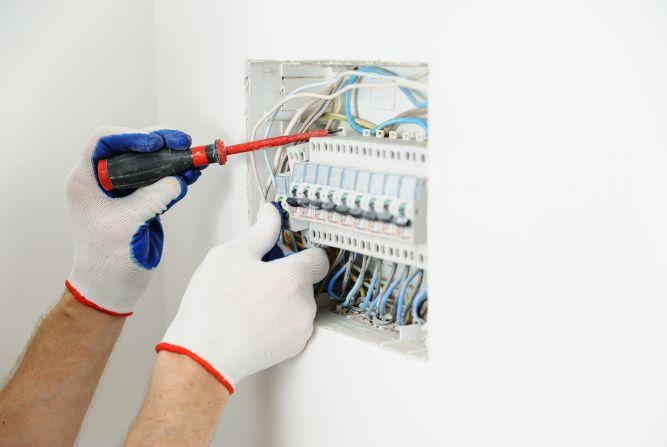
In 2018, the Government of Manitoba published the 13th Edition of the Manitoba Electrical Code (for those of you wondering, the previous edition was published in 2015). The 13th Edition is the most current edition as of the writing of this article (early April 2023).
Here’s what we’re not going to do over the course of this article. We’re not going to take you step by step through the electrical code. We’d have to explain every amendment and every part of the code and to do that, you’d need to understand both electrical systems and legalese—and if you did, you wouldn’t need us to explain the code to you.
Instead, we’re going to look at what the code seeks to accomplish, the difference between electrical codes in Winnipeg and Manitoba, the permitting you’ll need to install your own electrical, and a guide you can use for wiring your home.
That’s still a lot of information to cover on a topic we find absolutely electric—so let’s get started!
The Goal of Manitoba’s Electrical Code
The basic goal of an electrical code is to ensure that the electrical systems installed in your home are safe to use. You may be fascinated to learn that the electrical code goes beyond simply ensuring that your wiring is safe—it provides specific instructions as to how outlets are to be used, how many light sources must be provided in various circumstances, and more.
While Manitoba’s Electrical Code provides the rules and regulations for electrical throughout most of Manitoba, Winnipeg has its own electrical by-laws that must be followed. They’re largely in line with Manitoba’s Electrical Code but different enough that you can’t just follow Manitoba’s code when installing electrical systems in Winnipeg.
In other words, Manitoba’s Electrical Code is designed to ensure that your home is safe in more ways than one—it’s not just about preventing blackouts and electric fires.
Winnipeg’s By-law Vs. the Manitoba Electrical Code
Bureaucracy—always a joy.
With that in mind, here’s the Winnipeg Electrical By-law, updated in 2022!
Obtaining a Permit
You can’t just work on your electrical system without getting a permit. You can apply for an electrical wiring permit in Winnipeg online or in person. You can’t, however, obtain certain permits as a homeowner; renewable energy installations, work over 200 amps, and a number of other installations must be provided by a contractor.
Residential Wiring Guides
Permits can be obtained for residential properties outside of Winnipeg with Manitoba Hydro. Note that some restrictions exist on the permits you can get without a licenced electrician here, too.
Not that you should be doing any of this without a licenced electrician. As Louie the Lightning Bug would tell you, “You gotta play it safe around electricity.” Inspections are always necessary after new installations—all to keep you safe.
Again, we highly recommend avoiding wiring anything yourself. Installing and modifying electrical systems is not a simple task. You’re here trying to understand electrical codes. Think that’s daunting? The actual work of wiring them is about a billion times more complex.
That said, both Winnipeg and Manitoba have simplified the legalese, so you only have to understand wiring to get a basic idea of how to wire your home. Note that Winnipeg’s residential guide isn’t up to date (it was published in 2018, while the most recent by-laws were published in 2022). Here are those resources for you:
Manitoba’s Residential Wiring Guide
Winnipeg’s Electrical Installations Homeowner’s Guide
We encourage you to read through these guides to get a better understanding of Manitoba’s Electrical Code (and Winnipeg’s, for that matter)—the code is offered in a much simpler form in these guides.
That said, we again encourage you to get electrician services for residential installations or modifications of any kind. This is dangerous, complex, and costly stuff—don’t leave it up to chance.

